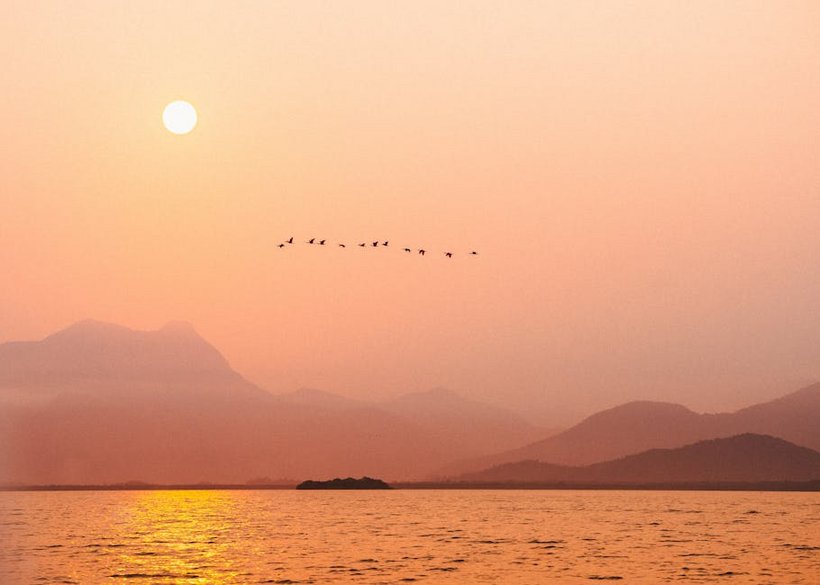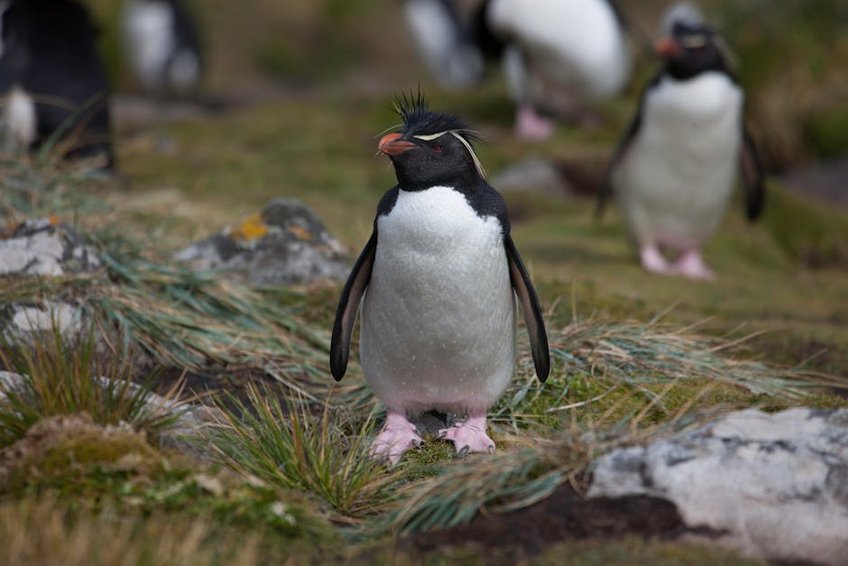Exploring the Kiribati Christmas Island Bird Sanctuary: A Birder’s Paradise
If you’re dreaming of an off-the-beaten-path adventure where nature takes center stage, the Kiribati Christmas Island Bird Sanctuary should be at the top of your travel list. Located on Kiritimati Island in the Republic of Kiribati, this remote sanctuary is one of the world’s most significant seabird breeding grounds, home to millions of birds including frigatebirds, boobies, and terns. You’ll find yourself immersed in a pristine ecosystem where the sounds of nesting birds fill the air and the landscapes range from sparkling lagoons to dense coconut groves. Visiting the Kiribati Christmas Island Bird Sanctuary offers a unique opportunity to witness conservation in action while experiencing the raw beauty of the Pacific. This destination isn’t just for hardcore birdwatchers—it’s for anyone seeking tranquility, adventure, and a genuine connection with nature. The sanctuary’s isolation means you’ll encounter few other tourists, giving you a sense of discovery that’s rare in today’s crowded travel scene. Prepare to be amazed by the sheer scale of avian life and the warm hospitality of the local I-Kiribati people, who have coexisted with these birds for generations. Your journey here will be more than a vacation; it will be a transformative experience that redefines your understanding of natural wonders.
Kiribati Christmas Island Bird Sanctuary – Essential Information
Before you pack your bags, it’s crucial to understand what makes the Kiribati Christmas Island Bird Sanctuary so special. This protected area covers substantial portions of Kiritimati Island, which is the largest coral atoll in the world by land area. The sanctuary was established to protect critical habitats for numerous seabird species, many of which are threatened or endangered. You’ll be visiting a place where conservation efforts are actively preserving biodiversity, and your presence as a responsible traveler helps support these initiatives. The climate is tropical, with consistent temperatures year-round, but rainfall patterns vary significantly. English is widely spoken alongside the native Gilbertese, making communication relatively straightforward for Western visitors. The local currency is the Australian Dollar (AUD), but US Dollars are often accepted, so carrying some cash is wise. Since Kiribati is one of the least visited countries globally, you’ll need to plan carefully—infrastructure is basic, and services can be limited. However, this very remoteness is what keeps the ecosystems pristine and the experiences authentic. Embrace the slow pace of island life; you’re here to disconnect and immerse yourself in nature’s rhythms.
What is the Kiribati Christmas Island Bird Sanctuary? – Key Facts
- The sanctuary protects over 15 species of seabirds, including the Christmas Island Frigatebird and Red-tailed Tropicbird, with population counts in the millions during breeding season.
- Located on Kiritimati Island, part of the Line Islands in Kiribati, it spans approximately 150 square miles of protected land and lagoon areas accessible via guided tours only.
- Conservation programs focus on habitat restoration and monitoring bird populations, with opportunities for visitors to participate in citizen science projects during their stay.
- Budget travelers can expect to spend around $1,500-$2,000 USD for a week, including flights from the US, basic accommodation, local meals, and guided tours—focus on guesthouses and group excursions to save money.
- Mid-range options cost approximately $2,500-$3,500 USD, covering comfortable eco-lodges, private guides, and some internal flights within Kiribati for island hopping experiences.
- Luxury packages start at $5,000 USD and include exclusive stays, chartered boats for bird watching, gourmet dining, and personalized itineraries with conservation experts.
- Kiribati National Tourism Office
- BirdLife International – Conservation Insights
History and Conservation Efforts – Behind the Scenes
The Kiribati Christmas Island Bird Sanctuary has a rich history intertwined with both natural and human influences. Originally used for phosphate mining and nuclear testing in the mid-20th century, the area has undergone remarkable recovery thanks to dedicated conservation programs. Today, organizations like BirdLife International work with local communities to protect these vital ecosystems. You’ll learn how traditional I-Kiribati practices, such as sustainable fishing, complement modern conservation techniques. The sanctuary’s management involves regular bird counts, predator control, and community education initiatives. Your visit contributes to these efforts through park fees and eco-tourism partnerships. Understanding this background adds depth to your experience, as you’re not just observing wildlife but supporting its preservation for future generations.

Kiribati Christmas Island Bird Sanctuary – Planning Your Trip
Planning a trip to the Kiribati Christmas Island Bird Sanctuary requires attention to detail due to its remote location. Start by considering your travel dates carefully, as bird activity peaks during specific seasons. You’ll need to book flights well in advance, as air access is limited to a few weekly flights from Fiji or Hawaii. Accommodation options range from basic guesthouses to eco-lodges, so align your choices with your comfort level and budget. Packing essentials include lightweight clothing, sturdy walking shoes, high-SPF sunscreen, and a good pair of binoculars for bird watching. Don’t forget insect repellent, as mosquitoes can be prevalent. Since internet and mobile coverage are sporadic, prepare for a digital detox and carry a satellite phone if necessary. Your itinerary should allow for flexibility, as weather conditions can affect transportation and activities. Engaging a local guide is highly recommended—they provide invaluable insights into bird behavior and ensure you visit the best spots safely. Remember, this isn’t a destination for luxury seekers; it’s for those who value raw nature and cultural authenticity over modern comforts.
Best Time to Visit Kiribati Christmas Island Bird Sanctuary
The ideal time to visit the Kiribati Christmas Island Bird Sanctuary depends on what you want to experience. For peak bird breeding activity, plan your trip between November and April, when millions of seabirds nest and raise their young. During these months, you’ll witness frantic feeding behaviors and hear the constant chatter of chicks. However, this period also coincides with the wet season, so expect occasional heavy rainfall and higher humidity. If you prefer drier conditions, visit from May to October, but note that bird numbers are lower, though still impressive. Sea turtles also nest on the beaches from December to March, adding another layer of wildlife viewing. Avoid the cyclone season from January to March if you’re concerned about travel disruptions. Regardless of when you go, early mornings and late afternoons offer the best light for photography and the most active bird behavior. You’ll find that each season has its charms, so align your visit with your personal preferences for weather and wildlife intensity.
Budget Planning and Costs for Your Sanctuary Adventure
Essential Preparation Checklist – What to Bring
Packing wisely for the Kiribati Christmas Island Bird Sanctuary ensures a comfortable and rewarding trip. Start with clothing: lightweight, long-sleeved shirts and pants protect against sun and insects, while a wide-brimmed hat is essential. Footwear should include waterproof hiking boots for muddy trails and sandals for beach areas. Your bird-watching gear must include binoculars with at least 8x magnification and a camera with a zoom lens for capturing distant birds. Health preparations involve consulting your doctor for vaccinations like typhoid and hepatitis A, and packing a comprehensive first-aid kit with anti-diarrheal medication. Since supplies are limited on the island, bring all necessary medications, snacks, and reusable water bottles. Don’t forget travel insurance that covers medical evacuation, given the remote location. Lastly, carry cash in small denominations for local purchases, and learn a few phrases in Gilbertese to enhance your interactions with locals.
Kiribati Christmas Island Bird Sanctuary – Top Attractions and Activities
Once you arrive, the Kiribati Christmas Island Bird Sanctuary offers a wealth of experiences that go beyond simple bird watching. You can embark on guided walks through the sanctuary’s core zones, where you’ll see nesting colonies up close without disturbing the birds. Kayaking through the calm lagoons provides a unique perspective, allowing you to spot seabirds diving for fish and resting on the water’s surface. Snorkeling in the surrounding reefs reveals a vibrant underwater world, with colorful coral and tropical fish complementing the avian spectacle above. For a cultural twist, visit local villages to learn about traditional fishing methods and how communities coexist with the sanctuary. Photography enthusiasts will find endless opportunities, from dramatic sunrise shots of birds taking flight to intimate portraits of chicks in their nests. If you’re feeling adventurous, join a night tour to observe nocturnal species and experience the sanctuary under the stars. Every activity is designed to deepen your appreciation for this fragile ecosystem while ensuring minimal impact on the environment.
Must-See Bird Species at Kiribati Christmas Island Bird Sanctuary
Your bird-watching sessions will be highlights of your trip, especially when you encounter the sanctuary’s iconic species. The Great Frigatebird, with its impressive wingspan and red throat pouch, performs dramatic courtship displays that are mesmerizing to watch. You’ll also spot the Red-tailed Tropicbird, easily identified by its streaming tail feathers and graceful flight patterns. Look for the Masked Booby, which nests in large colonies on the ground, and the Sooty Tern, whose massive flocks create swirling clouds in the sky. Rare sightings might include the Bristle-thighed Curlew, a migratory species that stops here during its long journey. Your guide will help you identify these birds and explain their behaviors, such as feeding techniques and nesting habits. Bring a field guide or use a bird identification app to enhance your learning. Remember to maintain a respectful distance to avoid stressing the birds, especially during breeding season when they are most vulnerable.
Hidden Gems and Local Favorites – Beyond the Birds
While the birds are the main attraction, the Kiribati Christmas Island Bird Sanctuary area holds other treasures worth exploring. Secret beaches like Poland Lagoon offer pristine sands and tranquil waters perfect for a quiet swim away from the crowds. You can visit the London Missionary Society Church, a historic site that reflects the island’s cultural heritage and provides insight into local life. For a unique experience, join a traditional outrigger canoe trip with local fishermen, who share stories and techniques passed down through generations. The salt flats at the island’s interior are hauntingly beautiful, especially at sunset when the light casts long shadows across the crystalline surfaces. Don’t miss the chance to taste fresh coconut water straight from the tree, a refreshing treat after a day of exploration. These lesser-known spots give you a fuller picture of life on Kiritimati and create memories that extend beyond the bird sanctuary itself.
Kiribati Christmas Island Bird Sanctuary – Practical Travel Information
Navigating the logistics of your visit to the Kiribati Christmas Island Bird Sanctuary is straightforward with proper planning. You’ll likely fly into Cassidy International Airport on Kiritimati, which has connections via Fiji Airways from Nadi or via Air Kiribati from Tarawa. Upon arrival, you’ll need to clear customs and immigration; most Western passport holders receive a 30-day visa-free entry, but always check current regulations before traveling. Ground transportation on the island is limited to rented bicycles, motorbikes, or 4×4 vehicles, which can be arranged through your accommodation. The roads are mostly unpaved, so expect bumpy rides that add to the adventure. Accommodation bookings should be made months in advance, especially during peak birding seasons, as options are scarce. While English is widely understood, learning a few Gilbertese phrases like “Ko na mauri” (hello) will endear you to locals. Cell service is unreliable, so inform family of your plans beforehand. Embrace the slow pace—island time means schedules are flexible, and delays are part of the experience.
| Category | Options/Features | Price Range (USD) |
|---|---|---|
| Budget Accommodation | Basic guesthouses with shared facilities, fan cooling, and local meals included | $50-$80 per night |
| Mid-Range Lodging | Eco-lodges with private bathrooms, solar power, and guided tour packages | $100-$200 per night |
| Luxury Stays | Exclusive beachfront bungalows with air conditioning, gourmet dining, and private guides | $300-$500 per night |


